5G System Design�
5G System DesignArchitectural and Functional Considerations and Long Term ResearchEdited byPatrick MarschDeutsche Bahn AG, GermanyÖmer BulakçıHuawei German Research Center (GRC), GermanyOlav QuesethEricsson Research, SwedenMauro BoldiTelecom Italia, Italy�
This edition first published 2018© 2018 John Wiley & Sons LtdAll rights reserved. No part of this publication may be reproduced, stored in a retrieval system, or transmitted, in any form or by any means, electronic, mechanical, photocopying, recording or otherwise, except as permitted by law. Advice on how to obtain permission to reuse material from this title is available at http://www.wiley.com/go/permissions.The right of Patrick Marsch, Ömer Bulakçı, Olav Queseth and Mauro Boldi to be identified as the authors of the editorial material in this work has been asserted in accordance with law.Registered Office(s)John Wiley & Sons, Inc., 111 River Street, Hoboken, NJ 07030, USAJohn Wiley & Sons Ltd, The Atrium, Southern Gate, Chichester, West Sussex, PO19 8SQ, UKEditorial OfficeThe Atrium, Southern Gate, Chichester, West Sussex, PO19 8SQ, UKFor details of our global editorial offices, customer services, and more information about Wiley products visit us at www.wiley.com.Wiley also publishes its books in a variety of electronic formats and by print‐on‐demand. Some content that appears in standard print versions of this book may not be available in other formats.Limit of Liability/Disclaimer of WarrantyWhile the publisher and authors have used their best efforts in preparing this work, they make no representations or warranties with respect to the accuracy or completeness of the contents of this work and specifically disclaim all warranties, including without limitation any implied warranties of merchantability or fitness for a particular purpose. No warranty may be created or extended by sales representatives, written sales materials or promotional statements for this work. The fact that an organization, website, or product is referred to in this work as a citation and/or potential source of further information does not mean that the publisher and authors endorse the information or services the organization, website, or product may provide or recommendations it may make. This work is sold with the understanding that the publisher is not engaged in rendering professional services. The advice and strategies contained herein may not be suitable for your situation. You should consult with a specialist where appropriate. Further, readers should be aware that websites listed in this work may have changed or disappeared between when this work was written and when it is read. Neither the publisher nor authors shall be liable for any loss of profit or any other commercial damages, including but not limited to special, incidental, consequential, or other damages.Library of Congress Cataloging‐in‐Publication data applied forISBN: 9781119425120Cover Design: WileyCover Images: ©cono0430/Shutterstock; ©Iaremenko Sergii/ShutterstockSet in 10/12pt Warnock by SPi Global, Pondicherry, IndiaPrinted in Great Britain by TJ International Ltd, Padstow, Corwall10 9 8 7 6 5 4 3 2 1�
To my wife Ines and our kids Philipp and Daniel for their continuous love and support, and to the great team in Nokia Wrocław that I was privileged to work with in the past years.Patrick MarschTo my family for their continuous support and encouragement over the years and my big brother Mesut Bulakçı, MD for guiding me to the right career path at my early age.Ömer BulakçıFor Eskil, Ellen and Ester.Olav QuesethTo the memory of my father Ivano.Mauro Boldi�
viiContributor List xviiForeword 1 xxiiiForeword 2 xxvAcknowledgments xxviiList of Abbreviations xxixPart 1 Introduction and Basics 11 Introduction and Motivation 3Patrick Marsch, Ömer Bulakçı, Olav Queseth and Mauro Boldi1.1 5th Generation Mobile and Wireless Communications 31.2 Timing of this Book and Global 5G Developments 51.3 Scope of the 5G System Described in this Book 81.4 Approach and Structure of this Book 10 References 122 Use Cases, Scenarios, and their Impact on the Mobile Network Ecosystem 15Salah Eddine Elayoubi, Michał Maternia, Jose F. Monserrat, Frederic Pujol, Panagiotis Spapis, Valerio Frascolla and Davide Sorbara2.1 Introduction 152.2 Main Service Types Considered for 5G 162.3 5G Service Requirements 172.4 Use Cases Considered in NGMN and 5G PPP Projects 182.4.1 NGMN use Case Groups 202.4.2 Use Case Groups from 5G PPP Phase 1 Projects 232.4.3 Mapping of the 5G‐PPP Use Case Families to the Vertical Use Cases 232.5 Typical Use Cases Considered in this Book 252.5.1 Dense Urban Information Society 252.5.2 Smart City 262.5.3 Connected Cars 262.5.4 Industry Automation 272.5.5 Broadcast/Multicast Communications 272.6 Envisioned Mobile Network Ecosystem Evolution 28Contents�
Contentsviii2.6.1 Current Mobile Network Ecosystem 282.6.2 Identification of New Players and their Roles in 5G 282.6.3 Evolution of the MNO‐Centric Value Net 312.7 Summary and Outlook 33 References 343 Spectrum Usage and Management 35 Thomas Rosowski, Rauno Ruismaki, Luis M. Campoy, Giovanna D’Aria, Du Ho Kang and Adrian Kliks3.1 Introduction 353.2 Spectrum Authorization and Usage Scenarios 363.2.1 Spectrum Authorization and Usage Options for 5G 363.2.2 Requirements for Different 5G Usage Scenarios 383.3 Spectrum Bandwidth Demand Determination 393.3.1 Main Parameters for Spectrum Bandwidth Demand Estimations 393.3.2 State of the Art of Spectrum Demand Analysis 403.3.3 Spectrum Demand Analysis on Localized Scenarios 403.4 Frequency Bands for 5G 413.4.1 Bands Identified for IMT and Under Study in ITU‐R 413.4.2 Further Potential Frequency Bands 433.4.3 5G Roadmaps 443.5 Spectrum Usage Aspects at High Frequencies 443.5.1 Propagation Challenges 453.5.2 Beamforming and 5G Mobile Coverage 453.5.3 Analysis of Deployment Scenarios 463.5.4 Coexistence of 5G Systems and Fixed Service Links 473.5.5 Coexistence under License‐exempt Operation 483.6 Spectrum Management 493.6.1 Evolutions in Dynamic Spectrum Management 493.6.2 Functional Spectrum Management Architecture 513.7 Summary and Outlook 53 References 544 Channel Modeling 57 Shangbin Wu, Sinh L. H. Nguyen and Raffaele D’Errico4.1 Introduction 574.2 Core Features of New Channel Models 594.2.1 Path Loss 594.2.2 LOS Probability 614.2.3 O2I Penetration Loss 634.2.4 Fast Fading Generation 654.3 Additional Features of New Channel Models 654.3.1 Large Bandwidths and Large Antenna Arrays 654.3.2 Spatial Consistency 67�
Contentsix4.3.3 Blockage 684.3.4 Correlation Modeling for Multi‐Frequency Simulations 694.3.5 Ground Reflection 704.3.6 Diffuse Scattering 724.3.7 D2D, Mobility, and V2V Channels 724.3.8 Oxygen Absorption, Time‐varying Doppler Shift, Multi‐Frequency Simulations, and UE Rotation 734.3.9 Map‐based Hybrid Modeling Approach 744.4 Summary and Outlook 74 References 75Part 2 5G System Architecture and E2E Enablers 795 E2E Architecture 81 Marco Gramaglia, Alexandros Kaloxylos, Panagiotis Spapis, Xavier Costa, Luis Miguel Contreras, Riccardo Trivisonno, Gerd Zimmermann, Antonio de la Oliva, Peter Rost and Patrick Marsch5.1 Introduction 815.2 Enablers and Design Principles 825.2.1 Modularization 825.2.2 Network Slicing 825.2.3 Network Softwarization 845.2.4 Multi‐Tenancy 855.2.5 Mobile or Multi‐Access Edge Computing 875.3 E2E Architecture Overview 885.3.1 Physical Network Architecture 885.3.2 CN/RAN Split 905.3.3 QoS Architecture 915.3.4 Spectrum Sharing Architecture Overview 935.3.5 Transport Network 935.3.6 Control and Orchestration 955.4 Novel Concepts and Architectural Extensions 975.4.1 Architecture Modularization for the Core Network 975.4.2 RRC States 995.4.3 Access‐agnostic 5G Core Network 1005.4.4 Roaming Support 1015.4.5 Softwarized Network Control 1025.4.6 Control/User Plane Split 1035.5 Internetworking, Migration and Network Evolution 1045.5.1 Interworking with Earlier 3GPP RATs 1055.5.2 Interworking with Non‐3GPP Access Networks 1075.5.3 Network Evolution 1115.6 Summary and Outlook 112 References 112�
Contentsx6 RAN Architecture 115 Patrick Marsch, Navid Nikaein, Mark Doll, Tao Chen and Emmanouil Pateromichelakis6.1 Introduction 1156.2 Related Work 1166.2.1 3GPP 1166.2.2 5G PPP 1176.3 RAN Architecture Requirements 1186.4 Protocol Stack Architecture and Network Functions 1196.4.1 Network Functions in a Multi‐AIV and Multi‐Service Context 1196.4.2 Possible Changes in the 5G Protocol Stack Compared to 4G 1216.4.3 Possible Service‐specific Protocol Stack Optimization in 5G 1246.4.4 NF Instantiation for Multi‐Service and Multi‐Tenancy Support 1276.5 Multi‐Connectivity 1296.5.1 5G/(e)LTE Multi‐Connectivity 1296.5.2 5G/5G Multi‐Connectivity 1306.5.3 5G/Wi‐Fi Multi‐Connectivity 1326.6 RAN Function Splits and Resulting Logical Network Entities 1336.6.1 Control Plane/User Plane Split (Vertical Split) 1346.6.2 Split into Centralized and Decentralized Units (Horizontal Split) 1356.6.3 Most Relevant Overall Split Constellations 1386.7 Deployment Scenarios and Related Physical RAN Architectures 1416.7.1 Possible Physical Architectures Supporting the Deployment Scenarios 1426.7.2 5G/(e)LTE and 5G Multi‐AIV Co‐Deployment 1436.8 RAN Programmability and Control 1446.9 Summary and Outlook 147 References 1487 Transport Network Architecture 151Anna Tzanakaki, Markos Anastasopoulos, Nathan Gomes, Philippos Assimakopoulos, Josep M. Fàbrega, Michela Svaluto Moreolo, Laia Nadal, Jesús Gutiérrez, Vladica Sark, Eckhard Grass, Daniel Camps‐Mur, Antonio de la Oliva, Nuria Molner, Xavier Costa Perez, Josep Mangues, Ali Yaver, Paris Flegkas, Nikos Makris, Thanasis Korakis and Dimitra Simeonidou7.1 Introduction 1517.2 Architecture Definition 1537.2.1 User Plane 1537.2.2 Control Plane 1557.3 Technology Options and Protocols 1587.3.1 Wireless Technologies 1587.3.2 Optical Transport 1617.3.3 Ethernet 1657.4 Self‐Backhauling 1657.4.1 Comparison with Legacy LTE Relaying 1667.4.2 Technical Aspects of Self‐Backhauling 1677.5 Technology Integration and Interfacing 1687.5.1 Framing, Protocol Adaptation, Flow Identification and Control 168�

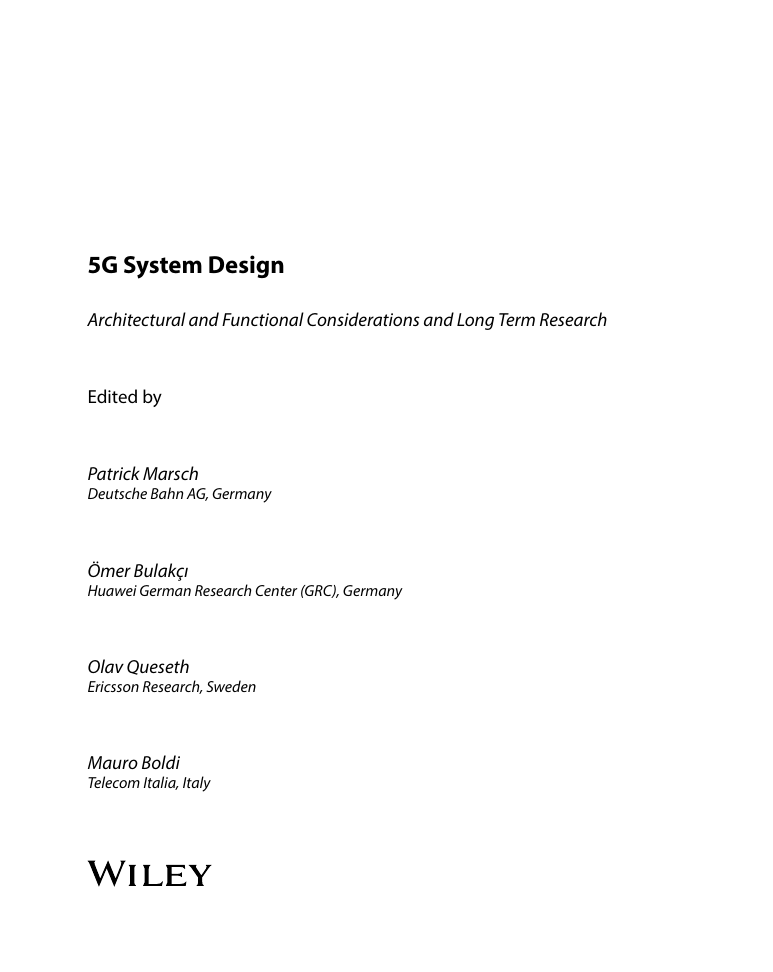
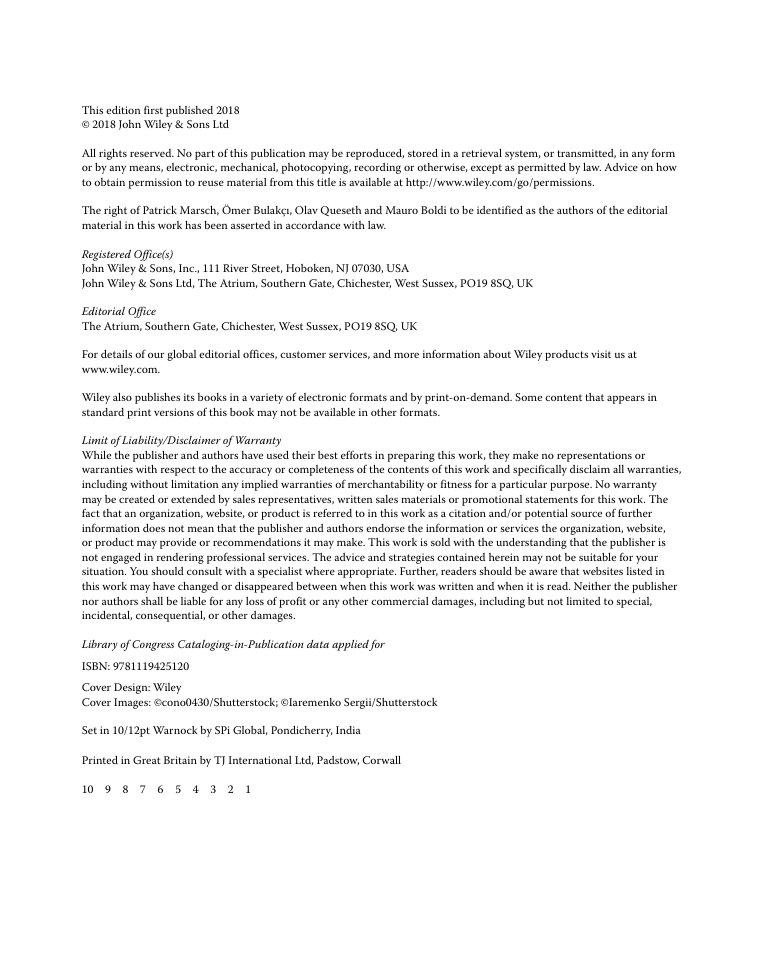

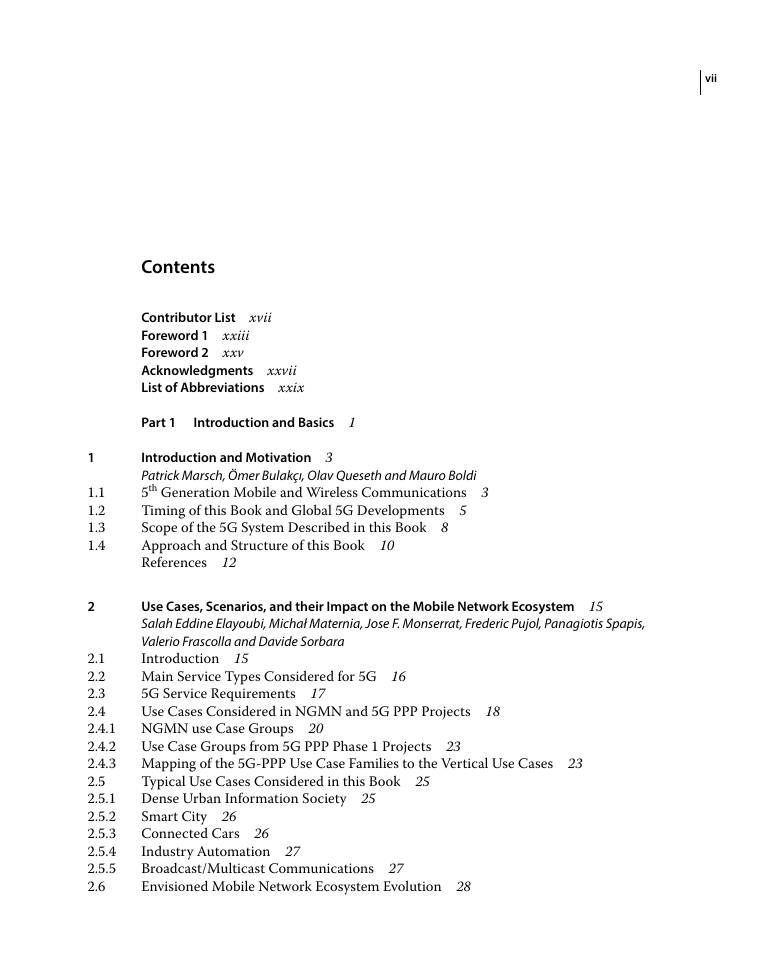
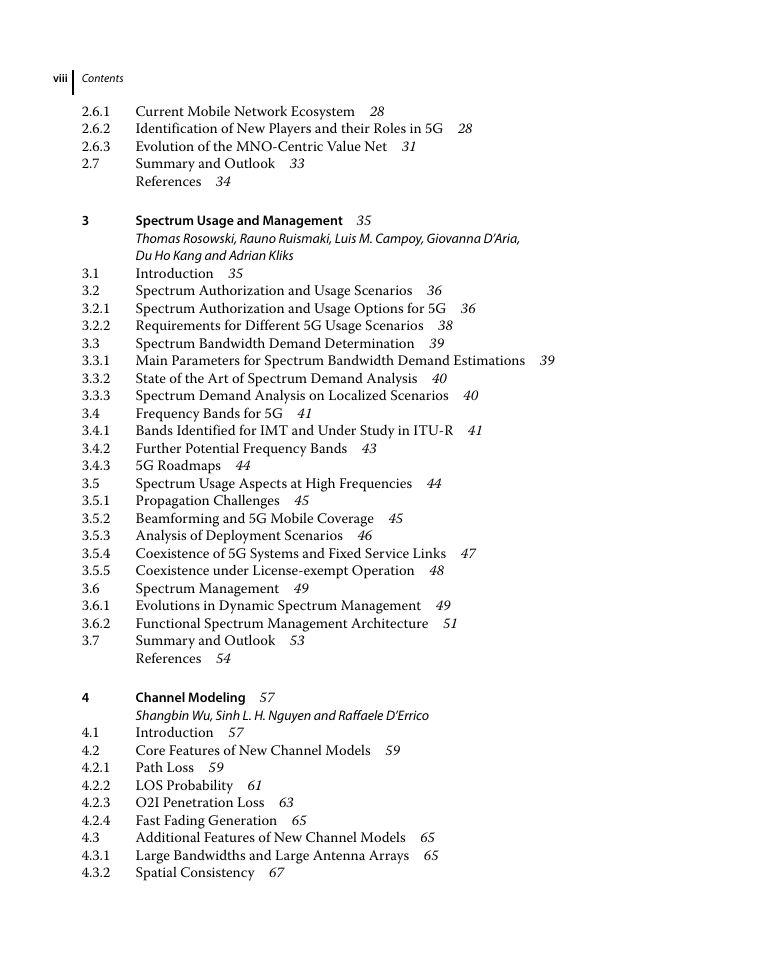
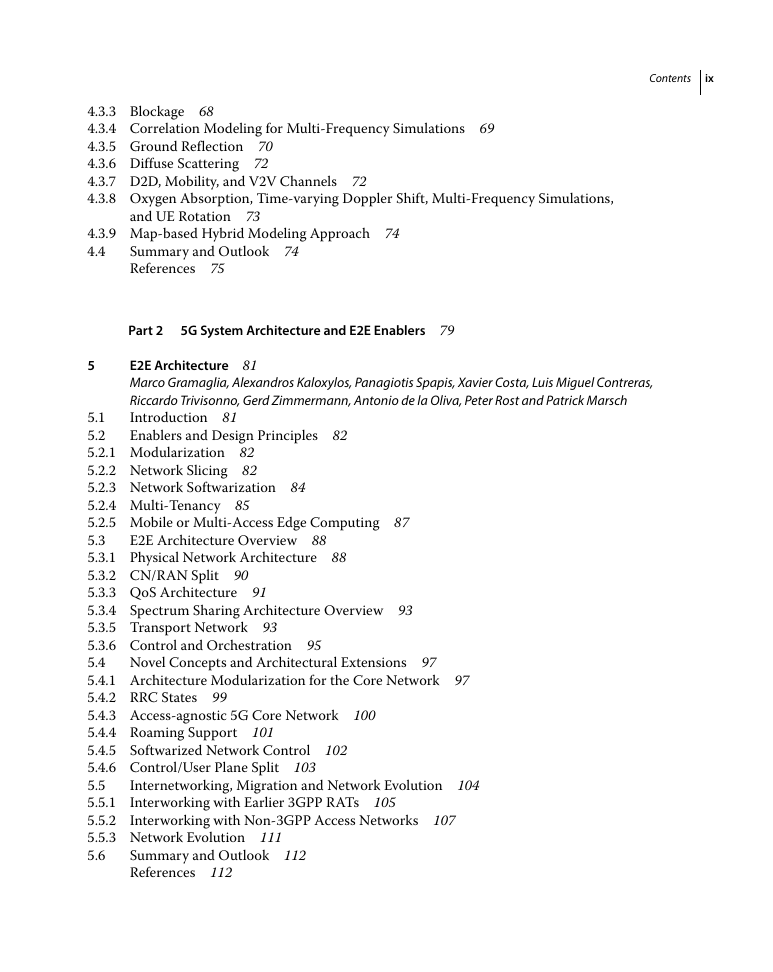
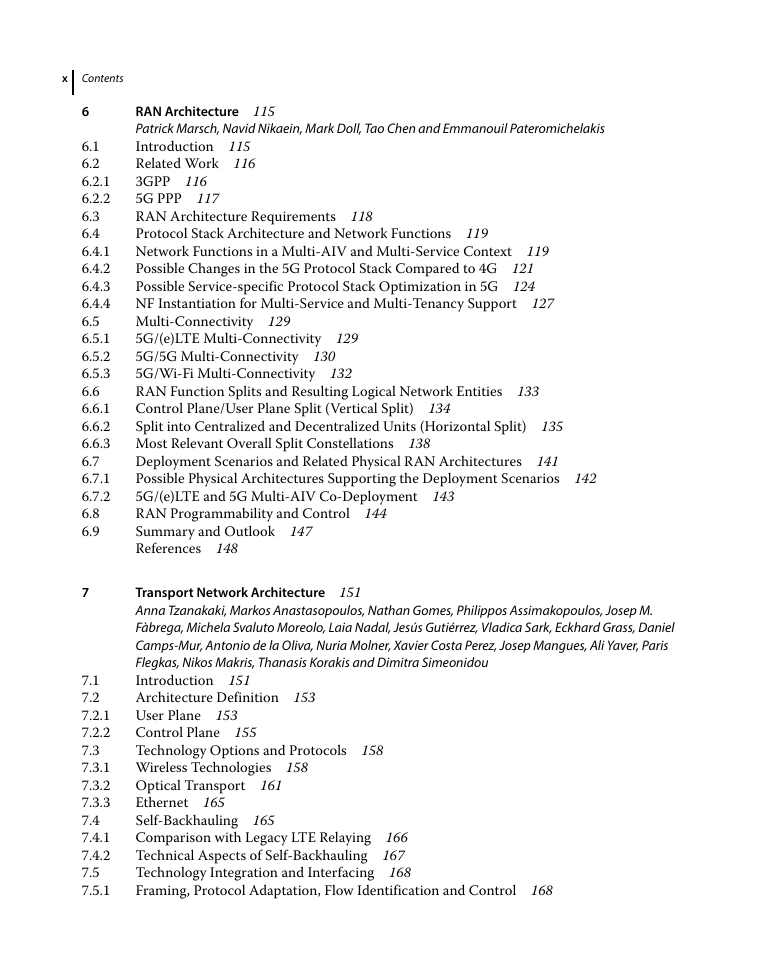








 2023年江西萍乡中考道德与法治真题及答案.doc
2023年江西萍乡中考道德与法治真题及答案.doc 2012年重庆南川中考生物真题及答案.doc
2012年重庆南川中考生物真题及答案.doc 2013年江西师范大学地理学综合及文艺理论基础考研真题.doc
2013年江西师范大学地理学综合及文艺理论基础考研真题.doc 2020年四川甘孜小升初语文真题及答案I卷.doc
2020年四川甘孜小升初语文真题及答案I卷.doc 2020年注册岩土工程师专业基础考试真题及答案.doc
2020年注册岩土工程师专业基础考试真题及答案.doc 2023-2024学年福建省厦门市九年级上学期数学月考试题及答案.doc
2023-2024学年福建省厦门市九年级上学期数学月考试题及答案.doc 2021-2022学年辽宁省沈阳市大东区九年级上学期语文期末试题及答案.doc
2021-2022学年辽宁省沈阳市大东区九年级上学期语文期末试题及答案.doc 2022-2023学年北京东城区初三第一学期物理期末试卷及答案.doc
2022-2023学年北京东城区初三第一学期物理期末试卷及答案.doc 2018上半年江西教师资格初中地理学科知识与教学能力真题及答案.doc
2018上半年江西教师资格初中地理学科知识与教学能力真题及答案.doc 2012年河北国家公务员申论考试真题及答案-省级.doc
2012年河北国家公务员申论考试真题及答案-省级.doc 2020-2021学年江苏省扬州市江都区邵樊片九年级上学期数学第一次质量检测试题及答案.doc
2020-2021学年江苏省扬州市江都区邵樊片九年级上学期数学第一次质量检测试题及答案.doc 2022下半年黑龙江教师资格证中学综合素质真题及答案.doc
2022下半年黑龙江教师资格证中学综合素质真题及答案.doc